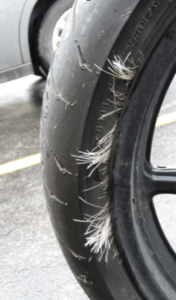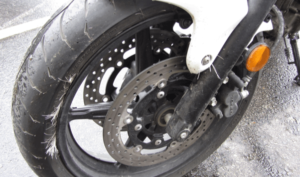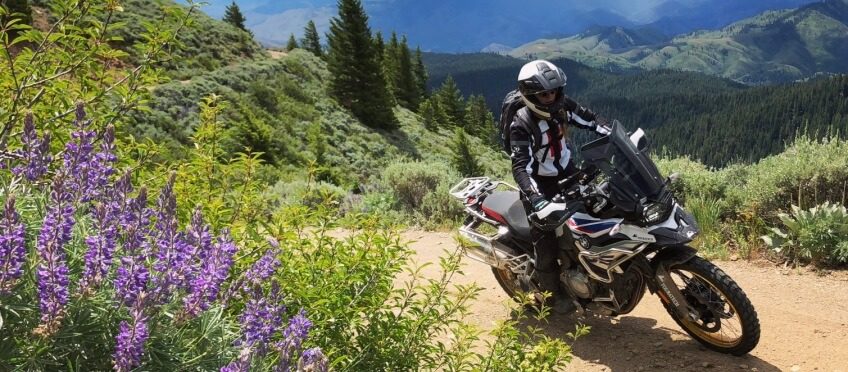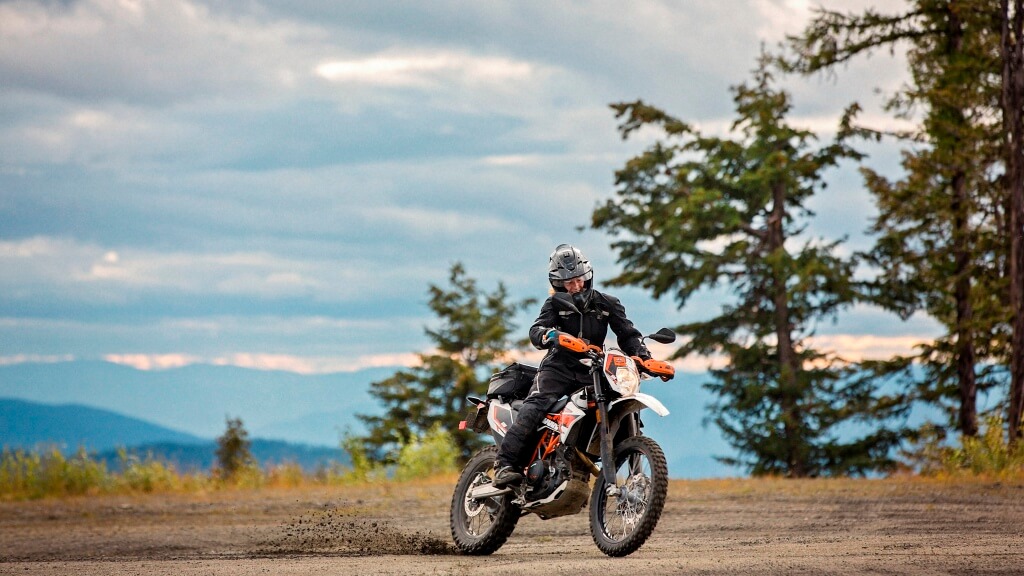It happened nine years ago now. It was dark; we should have stopped riding but only had another 20km to go to get to our hotel. The rain was light and we rode in a staggered riding position, my dad was in front in the left tire track, I followed in the right. I sifted through my thoughts as we rode, paying attention to the reflective lane markings ahead and the red glow of my dad’s tail light; Suddenly it became illuminated. He swerved into the left lane beside us and then I saw it; a deer. My mind froze for just a split second before I started swerving to the right trying to give it space. Unknowingly cornering the deer, and giving it no exit option, I prepared for impact. A force that felt like hitting a wall. I struggled to keep the bike upright as I impacted with the stomach of the deer. It wrapped around the fork and swung off to the side. I pulled over and luckily there was another car that came up from behind to check on me, and my dad and the kind stranger inspected the deer.
 I still think about the idea that I could have avoided the deer all together, if only we had minimized our space on the road. My father and I drew back to this idea again and again, even to this day. A few days before I hit the deer we had another close call with a partridge, it was a similar situation, my dad veered right and I left. For me, it was instinctive to push my bike away from the animal. This however, caused both bikes to take up much more surface of the road, giving the animal less space to escape. Regardless, I was lucky, keeping the bike up, killing the deer and walking away with a sore foot. I believe my instincts and muscle memory from off-road riding contributed to my favourable outcome. Throughout the years I’ve learned that it’s ok to have the bike move under you, when to fight the bike and when to let the bike do its thing.
I still think about the idea that I could have avoided the deer all together, if only we had minimized our space on the road. My father and I drew back to this idea again and again, even to this day. A few days before I hit the deer we had another close call with a partridge, it was a similar situation, my dad veered right and I left. For me, it was instinctive to push my bike away from the animal. This however, caused both bikes to take up much more surface of the road, giving the animal less space to escape. Regardless, I was lucky, keeping the bike up, killing the deer and walking away with a sore foot. I believe my instincts and muscle memory from off-road riding contributed to my favourable outcome. Throughout the years I’ve learned that it’s ok to have the bike move under you, when to fight the bike and when to let the bike do its thing.
I think about this moment every time I get on a bike, I think about all of the things that helped and hindered me in this situation and I’ve put together a little list of things that might help you prepare for the unlikely instance that you find yourself in a similar situation.
Take a Dirt Bike Lesson: It might not be an appealing idea to some riders, but trust me it is worth it. You can ask anyone who rode dirt before touching tarmac and they’ll tell you the advantages. Whether it is experiencing loss of traction in corners, emergency braking, situational awareness or just being less intimidated with the idea of falling, dirt biking will make you a more well-rounded rider overall.
Emergency Braking: Most of us never know how quickly we can slow down and stop our motorcycle, so it’s a great exercise to gain an understanding of what your safe area is while riding. This can be done through a dirt bike lesson, or at a street bike course. As a rider, it’s important to understand that about 70% of your braking power comes from your front brake. Not to mention using your front brake properly will compress your front suspension allowing the tire tread to gain maximum stopping traction.
Stay Focused: The great thing about motorcycling is that it offers a time for our mind to quiet down; or wander in some cases. Whether it’s the isolation, the road, or the sound of the motorcycle, we find great comfort in the quietness of the road. The important thing though is that you remain focused on your surroundings. Learn to spot the signs of fatigue in yourself, know when to stop and when to rest.
Don’t ride at night: Do your best to stay off the road at night, if you can’t, at least keep in mind that the situation can change at a moment’s notice, whether it be other motorists blinding you with their lights or active wildlife. The outside factors of risk just become much greater as soon as night comes, your vision and visibility also diminish greatly adding to the inherent risk.
Wear the right gear: You never know when it can happen, injuries take much longer to heal both physically and mentally. Be smart, always expect the unexpected and always wear your gear.
 Minimize your space on the road: If you’re riding with others and see an animal on the road, understand this idea of staying together instead of veering to the other side of the road. This will minimize the risk of hitting the animal.
Minimize your space on the road: If you’re riding with others and see an animal on the road, understand this idea of staying together instead of veering to the other side of the road. This will minimize the risk of hitting the animal.
Make sure you and your bike are covered: Get the proper health insurance and the right coverage for your bike. Riders Plus can help you out with the specific needs for your bike and what you plan (or don’t plan) to do with your bike.
When it comes down to the nitty-gritty of it all, you can’t prepare enough to stop the conditions that might befall you on the road. You can, however, take the steps to prepare yourself and your bike to ensure you have the best outcome. I hope this article leaves you with a lingering sense of cautiousness, and a willingness to continuously work on improving your riding skills.










A great article. Encountering animals is a scary situation on a bike especially. I always scan the side of the road while riding. You never know…as Emily says be prepared. All the gear all the time. ATGATT